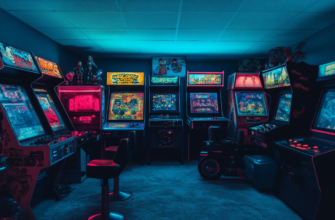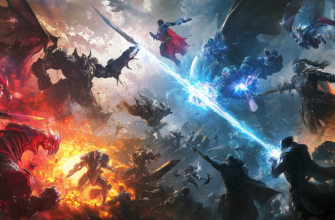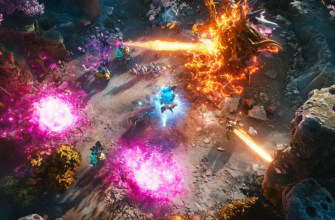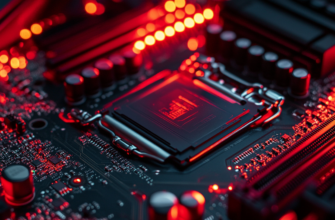- Choosing your first gaming PC: The ultimate guide to start your journey
- Understanding the importance of PC gaming hardware
- Step-by-step guide to choosing your gaming PC
- Step 1: Choose between pre-built vs custom-built PCs
- Step 2: Determine your budget and gaming needs
- Step 3: Focus on the essential components
- Step 4: Don’t forget peripherals
- Practical tips and recommendations
- Conclusion: Your first gaming PC is just the beginning
Choosing your first gaming PC: The ultimate guide to start your journey
Hey, bro! So, you’re thinking about jumping into the world of PC gaming but aren’t really sure where to start when it comes to choosing that perfect rig. No worries—I’ve totally been there, and I know the whole process can be a bit overwhelming at first. There are a ton of options available, a load of technical specs to consider, and it’s easy to feel lost in the jargon. But you know what? Stick with me and by the end of this guide, you’ll know exactly what to look for in your first gaming PC, without getting scammed or overspending.
To get you started, we’ll go over every component you’ll need and what to prioritize depending on the games you’ll be playing. We’ll also touch on the eternal question: to build or to buy? So, buckle up and let’s get you gaming like a pro in no time!
Understanding the importance of PC gaming hardware
Before we dive into the step-by-step guide, let’s talk briefly about why your gaming PC components matter. Unlike console gaming, where the hardware is fixed, PC gaming offers flexibility and significant upgrades in terms of performance. Choosing the right hardware can guarantee you buttery-smooth gameplay, enable higher resolutions, and even boost your frame rate (FPS). And let’s be real—getting over 60 FPS, especially in fast-paced games like shooters, can really make a difference in how sharp and responsive everything feels.
Pro Tip: If you’re only used to 60 FPS, going up to 144 or even 240 with the right setup feels like gaming on cheat code mode!
Step-by-step guide to choosing your gaming PC
Alright, time to get to the meat and potatoes. I’m going to break down which parts matter the most so you can build or buy a PC that matches what you want to get out of your gaming experience.
Step 1: Choose between pre-built vs custom-built PCs
The first question you’re going to have to ask yourself is whether you’re going to buy a pre-built PC or custom build your own rig. Each has its pros and cons, so let’s look at the options:
Pre-built PCs:
- Ready to go right out of the box.
- No need to worry about compatibility between parts—everything has been taken care of.
- Warranty provided, covering most (if not all) components in the case of any issues.
- Slightly more expensive for the convenience it offers.
Custom-built PCs:
- Usually cheaper (depending on the parts you choose).
- Gives you full control over what goes into your machine (more future upgrade flexibility).
- Can be a fun project to learn more about hardware.
- The risk of compatibility issues if you don’t do your research beforehand.
Personal Story: I built my first rig, and while it was stress-inducing as heck at the start (turns out, I forgot to plug in the CPU power cable), that moment when you hear the first boot beep is something else. Highly recommend!
Step 2: Determine your budget and gaming needs
Your budget is the biggest factor when choosing your first gaming PC. But here’s the trick: Don’t assume you need to spend $3000+ just to game. The price will vary based on the type of games you want to play and the resolutions/settings you’d like. Here’s a rough guide:
- Entry-level (around $500-$700): Ideal for playing esports titles like CS:GO, Fortnite, or League of Legends on mid-to-high settings. Expect to run 1080p comfortably, but forget about 4K gaming here.
- Mid-range (around $1000-$1500): You’ll handle most modern games on high settings at 1080p and some 1440p (or 144 Hz at lower resolutions). You’ll be able to run AAA titles like Cyberpunk 2077 and The Witcher 3 smoothly.
- High-end (around $2000+): You’re stepping into 4K gaming territory at high or ultra settings. Expect to crush any new AAA releases, VR games, and even competitive titles with frame rates that give you an edge.
Step 3: Focus on the essential components
When shopping for a gaming PC, certain parts should be prioritized, while others (like pretty RGB lights) can be added later depending on your budget. Here are the essentials you need to focus on:
1. CPU (Central Processing Unit)
This is the brain of your system. If you’re sticking with 1080p gaming, a mid-range CPU should be enough. Think of options like an Intel Core i5 or AMD Ryzen 5. For more demanding games, or if you want future-proofing, go for the Intel i7/i9 or the AMD Ryzen 7/9 series.
Keep in mind: Six to eight cores should future-proof you quite nicely, but anything more is really for those taking on heavy multitasking or maybe game streaming.
2. GPU (Graphics Processing Unit)
Arguably, the most important part of any gaming rig. This is what renders game graphics, so you’ll want to get the best one your budget allows. NVIDIA’s GeForce GTX/RTX lineup and AMD’s Radeon RX cards both offer excellent options. The RTX cards command higher prices but feature ray tracing and DLSS, which can significantly boost performance at high resolutions.
Here’s a breakdown by tier:
- Mid-Range: NVIDIA RTX 3060, AMD RX 6700 XT.
- High-end: NVIDIA RTX 3080 – 4090, AMD RX 6900 XT – 7900 XTX.
3. RAM (Random Access Memory)
Having enough RAM (16GB minimum) is crucial for modern gaming. This allows your PC to handle the demands of different programs and games running smoothly. For optimal future-proofing, 32GB is where the sweet spot lies, but for most gamers starting out, 16GB should more than suffice.
4. Storage (SSD vs HDD)
When it comes to storage, always opt for solid-state drives (SSD) over traditional hard drives (HDD) for gaming. SSDs provide significantly faster load times, making them essential for booting up your games and system with the least delay. At the very least, aim for a 500GB SSD for your operating system and games.
Pro Tip: An SSD paired with a larger HDD for storing less critical content, like music or movies, strikes a good balance between speed and storage space.
5. Motherboard
The motherboard connects all your components. Its main concern is ensuring your CPU, RAM, and storage are compatible, so there’s not much need to go overboard. Brands like ASUS, MSI, and Gigabyte make reliable boards that last long. Always check the socket type to match your CPU.
6. Power supply unit (PSU)
A solid PSU is key to supporting the performance demands of your system. Don’t cheap out here! Make sure it’s reliable and has enough wattage to back up your GPU and CPU. 550-750W is usually enough for a mid-range PC, but if you’re packing an RTX 4090, you might need over 850W.
7. Case
The case is mostly about personal aesthetics, but you also want to ensure it’s big enough for optimal airflow and to fit all your parts comfortably. Brands like NZXT and Corsair offer well-ventilated and stylish designs.
Step 4: Don’t forget peripherals
It’s critical to remember your gaming peripherals when planning your first setup. You’ll need a solid monitor, keyboard, mouse, and sound setup (whether that’s a headset or speakers). Here’s what matters for each:
- Monitor: Look for a refresh rate of at least 75Hz for smooth gaming, but ideally, shoot for 144Hz if you’re playing competitive titles. For resolution, 1080p is fine for competitive gaming, while 1440p or 4K is great for immersive gaming experiences.
- Mouse and Keyboard: Go mechanical if you can, as the tactile feel and responsiveness (especially with certain key switches) can actually improve in-game performance. Mice like the Logitech G Pro or Razer DeathAdder are killer for precision gaming.
Practical tips and recommendations
- Build incrementally: Don’t feel like you need to buy everything top-of-the-line right out of the gate. You can always upgrade later. Focus first on the components that give the biggest in-game benefits, like the GPU and CPU.
- Consider refurb/used parts: If you’re on a tight budget, you can find refurbished or slightly used parts that are significantly cheaper. Just make sure they still have some warranty or come from a trusted seller.
- Don’t skimp on cooling: Cooling solutions like extra case fans or a decent CPU cooler are crucial for maintaining your PC’s performance over time, especially when playing resource-hungry games like Red Dead Redemption 2.
Conclusion: Your first gaming PC is just the beginning
Alright, you’re pretty loaded with information now! The key takeaway here is that you should always match your budget and needs when selecting your first gaming PC. Whether you’re buying a pre-built or building your custom rig, make sure you’re prioritizing the right components for the games you’re most excited to play.
Ready to dive into PC gaming, bro? Before you make your choice, take your time with research, explore different builds or configurations, and don’t hesitate to ask the gaming community for feedback. Welcome to the master race—now go get yourself a rig that can run your favorite titles without breaking a sweat!

















